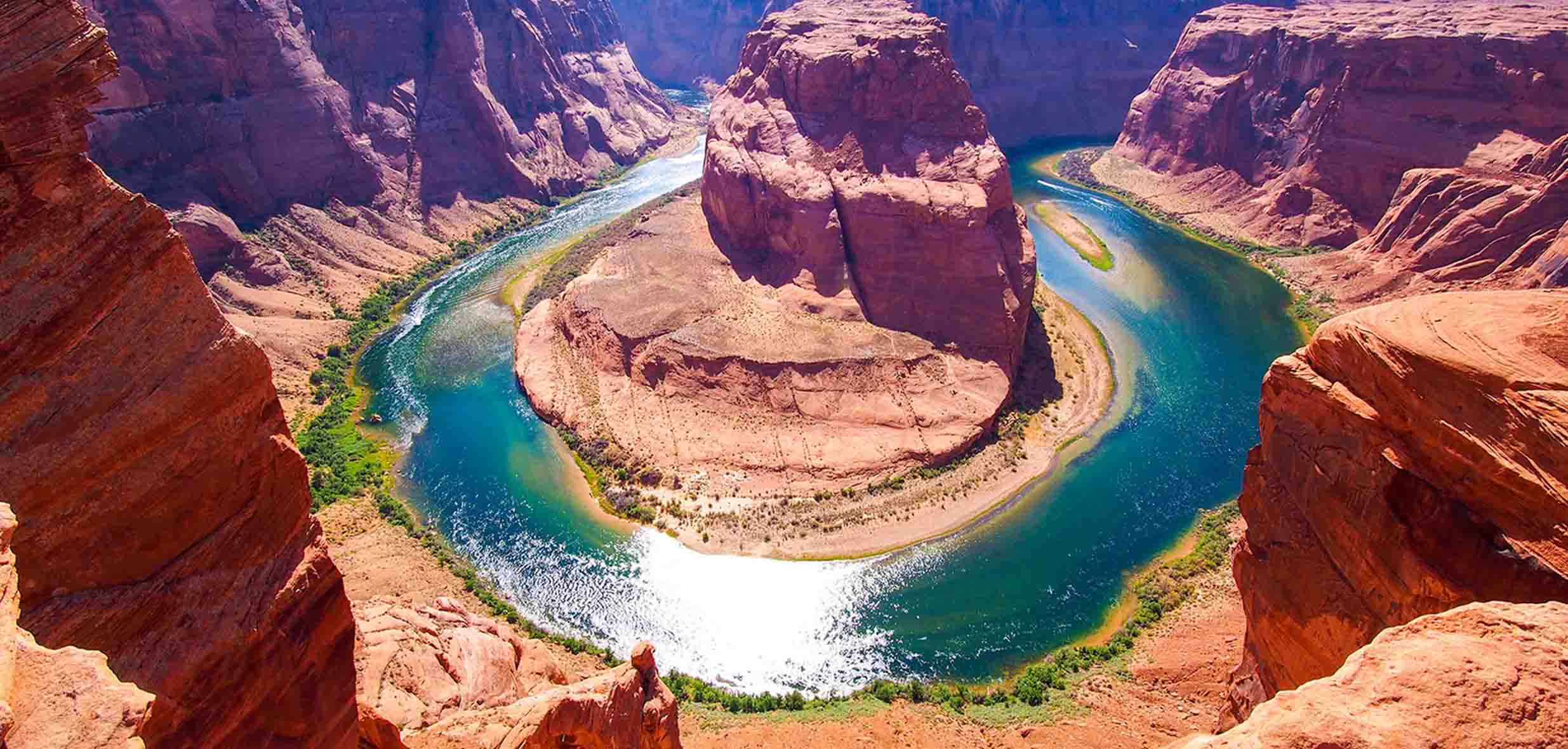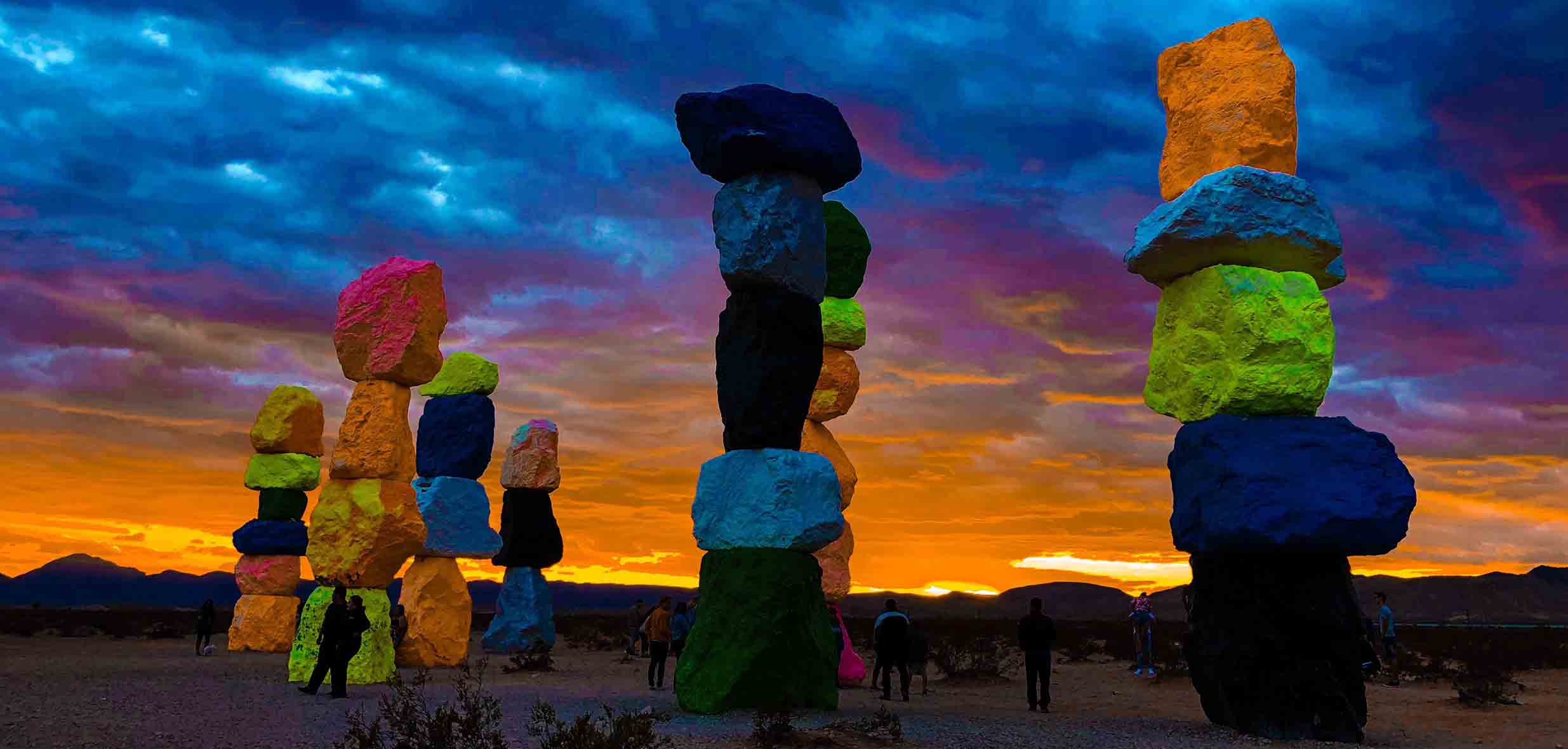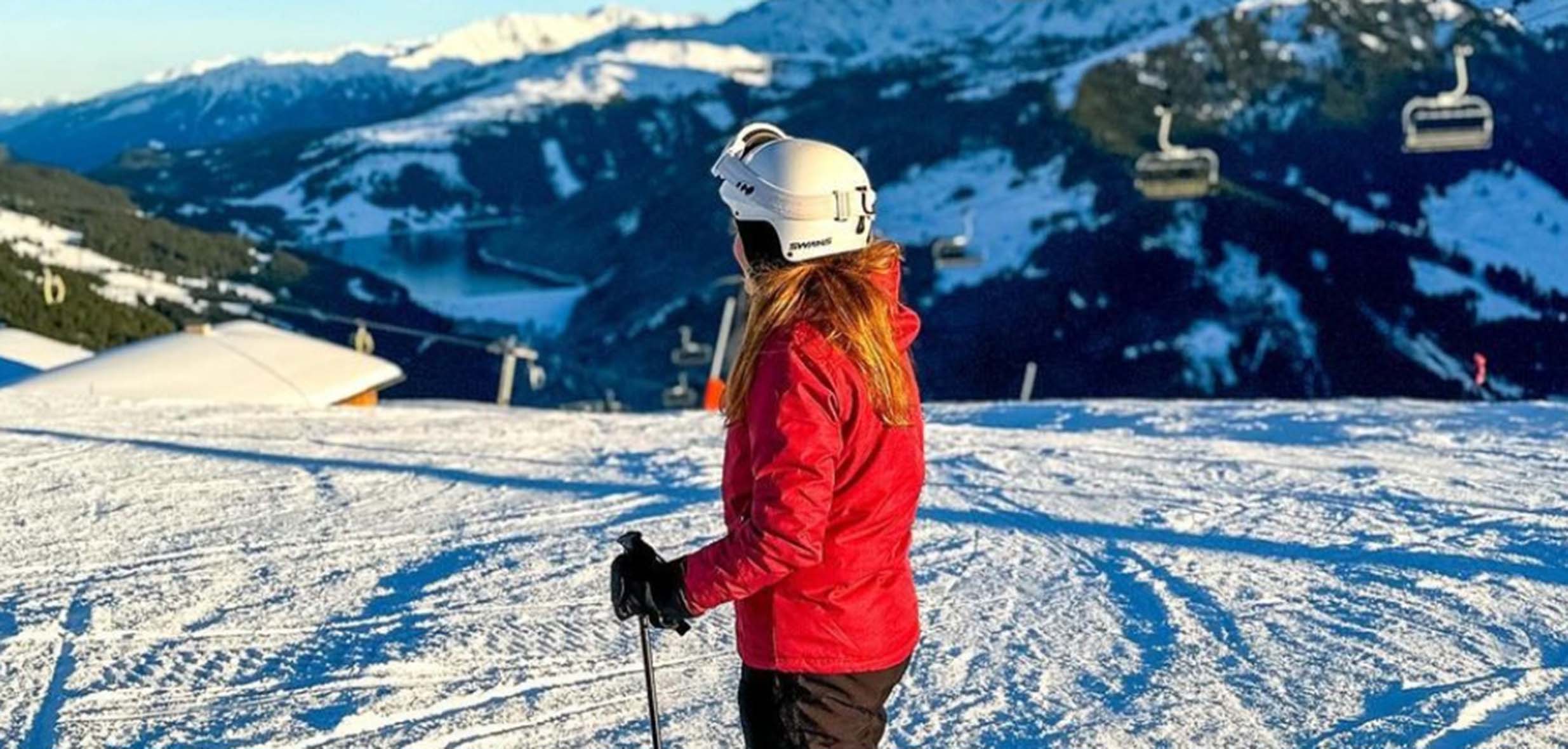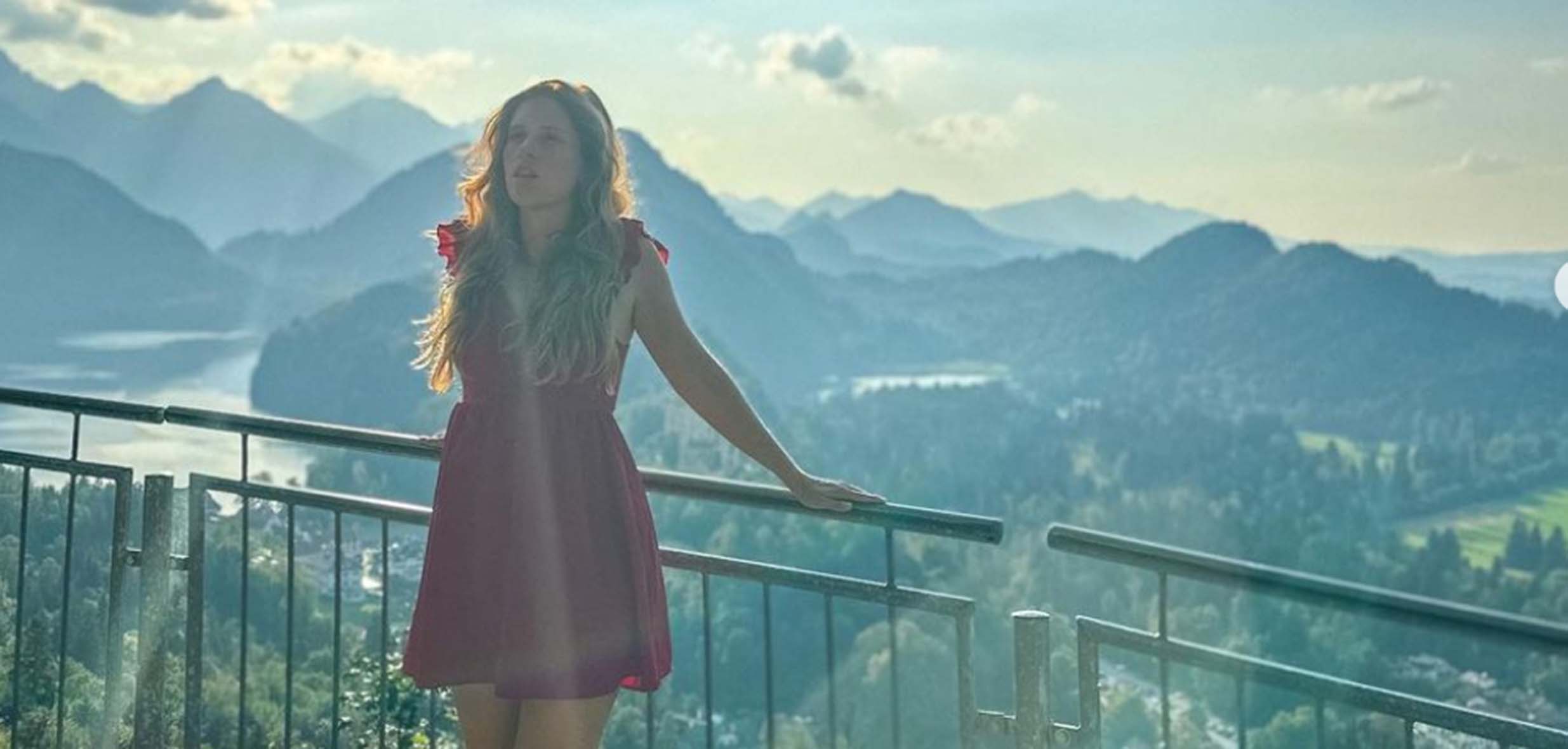As one of the most famous natural wonders in the southwestern United States, Antelope Canyon has attracted countless photographers and nature lovers with its fantastic light and shadow effects and unique sandstone landforms. The rock walls here have been carved by water for millions of years, presenting picturesque textures and colors that are breathtaking.
Especially at sunrise in the early morning, the first ray of sunlight penetrates the narrow gap of the canyon, forming a dreamy light column. At that moment, light and shadow interweave, the sandstone surface is lit up, and the scene is breathtaking, becoming one of the most unforgettable natural light and shadow wonders in the world.
Ⅰ. Introduction to Antelope Canyon: A Light and Shadow Miracle Carved by Nature
Located near the town of Page, Arizona, Antelope Canyon is divided into two parts: Upper Antelope Canyon and Lower Antelope Canyon. The canyon was formed by millions of years of water erosion. The sandstone walls have beautiful curves, delicate surfaces, and rich color layers. This is one of the most famous places in the world to shoot light columns and light and shadow effects, attracting a large number of photographers and tourists.
The Upper Antelope Canyon is considered to be a more suitable place to watch the sunrise light column because it is spacious, flat and well-lit. At sunrise, the sun shines in from the narrow cracks, and the light column is like a mysterious ladder to heaven, scattered on the sandstone surface in a mottled manner, forming a landscape with great visual impact. The Lower Antelope Canyon is known for its rugged and narrow terrain, with a stronger adventure atmosphere, but the light changes are more complicated.
Ⅱ. The best time to choose from Las Vegas
The straight-line distance from Las Vegas to Antelope Canyon is about 270 miles (about 435 kilometers), and the actual driving time is about 4.5 to 5 hours, so reasonable departure time planning is particularly important. The sunrise time of Antelope Canyon varies with the seasons, and the best viewing time is usually concentrated between 7 and 9 in the morning in spring and autumn.
To ensure that you can arrive on time and enter the canyon smoothly, it is recommended to depart from Las Vegas between 4 and 4:30 in the morning. This will reserve enough time to deal with traffic and entry procedures along the way to avoid missing the best light due to delays. Especially during the peak tourist season, early departure can effectively avoid the peak of crowds and get a quieter and purer viewing experience.
If you choose to join a guided tour, it is generally arranged to depart in the evening or early morning of the previous day, and professional photography guidance will be provided to help tourists seize the best shooting time.
Ⅲ. Itinerary planning and route suggestions
1. Self-driving route recommendation
Drive from Las Vegas to Antelope Canyon, drive north along I-15 to Utah, then turn south on US-89, pass near Canyonlands National Park, and go directly to Page Town. This route has beautiful scenery and good road conditions, which is suitable for self-driving enthusiasts.
Adequate supplies, especially water and fuel, need to be prepared along the way, because there are few gas stations on some sections. Navigation equipment needs to be updated in advance to ensure stable signals. To avoid traffic pressure, it is recommended to avoid the morning rush hour on weekends and holidays.
2. Tour group and chartered car service
For tourists who are not familiar with the route or want to be more worry-free, most third-party platforms provide one-day or two-day tour packages to Antelope Canyon from Las Vegas. The itinerary usually includes round-trip transportation, canyon tickets, guide services, and some also include surrounding attractions such as Horseshoe Bend.
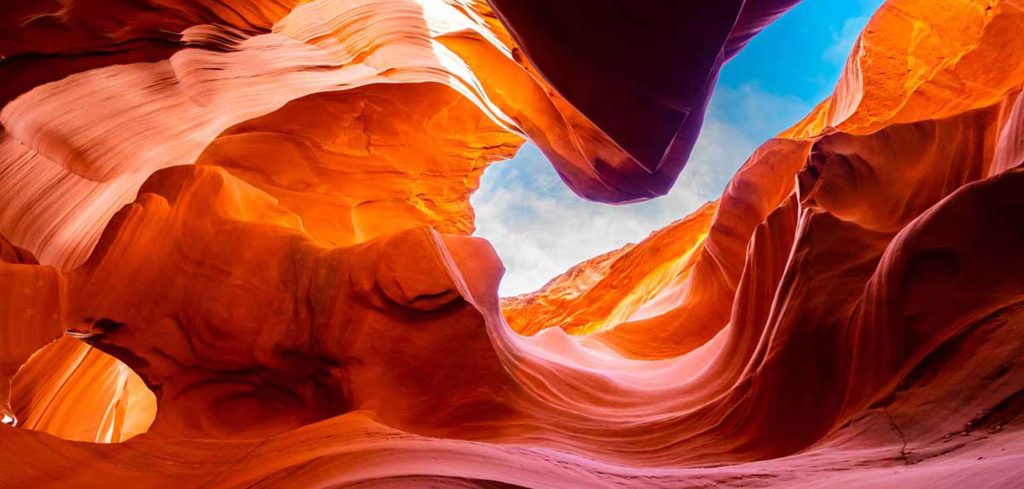
Choosing a professional guide not only ensures a smooth trip, but also allows you to gain in-depth understanding of the canyon’s geology and history through explanations. Some high-end charter services also provide customized routes and photographers, which are suitable for travelers who pursue personalized experiences.
IV. Detailed explanation of attractions and viewing highlights
Upper Antelope Canyon
As the most popular viewing point, the greatest charm of the Upper Antelope Canyon lies in the beams of sunlight that penetrate the narrow slit at sunrise. The interior of the canyon is spacious and flat, suitable for all kinds of tourists, including photography enthusiasts and ordinary sightseeing. The probability of light columns appearing is the highest and the duration is longer, usually reaching its peak around 9 am.
The tour route is roughly U-shaped, about 1,300 feet (about 400 meters) long, with low walking difficulty, suitable for children and the elderly. Tripods are prohibited in the canyon, and you need to travel light. The tour guide will explain the formation process of the canyon and the surrounding geographical knowledge.
Lower Antelope Canyon
The Lower Antelope Canyon is more adventurous, with narrow trails and several ladders and slopes to climb. It is suitable for those with better physical strength. The light and shadow changes are rich, the rock wall has a variety of color levels, and the shooting space is diverse, but the light column appears for a shorter time and is not as obvious as the Upper Antelope.
The entire tour is about 1 mile, and you need to follow the guide to act in unison. The Lower Antelope Canyon is also regarded as a natural wonder with a more “secret sense”, suitable for tourists who like photography and outdoor adventures.
Recommended surrounding attractions
Horseshoe Bay: Not far from the Antelope Canyon, the canyon surrounds the Colorado River to form a horseshoe shape, and the overlooking angle is spectacular. Suitable for shooting at sunrise or sunset, it is recommended to arrange a tour with the Antelope Canyon.
Glen Canyon National Park: A wider natural landscape, suitable for an extended trip and in-depth tour.
V. Booking platform recommendations and precautions
Klook
The platform provides a variety of one-day and multi-day tour packages for Antelope Canyon, supporting Chinese interface and multiple payment methods. The user evaluation system is transparent, the itinerary is reasonable, and it is suitable for free travelers. Some packages include round-trip transportation and professional photography guidance.
Viator
Relying on Tripadvisor, Viator has a wealth of local guide resources and cost-effective itineraries. It supports group and private group options, with a simple booking process and perfect after-sales service. Suitable for tourists with diverse needs for price and experience.
GetYourGuide
GetYourGuide has a great influence in the US tourism market, especially in niche markets such as photography tours and private customized tours. The platform supports multiple languages and provides electronic tickets for fast entry, which is suitable for tourists with tight schedules.
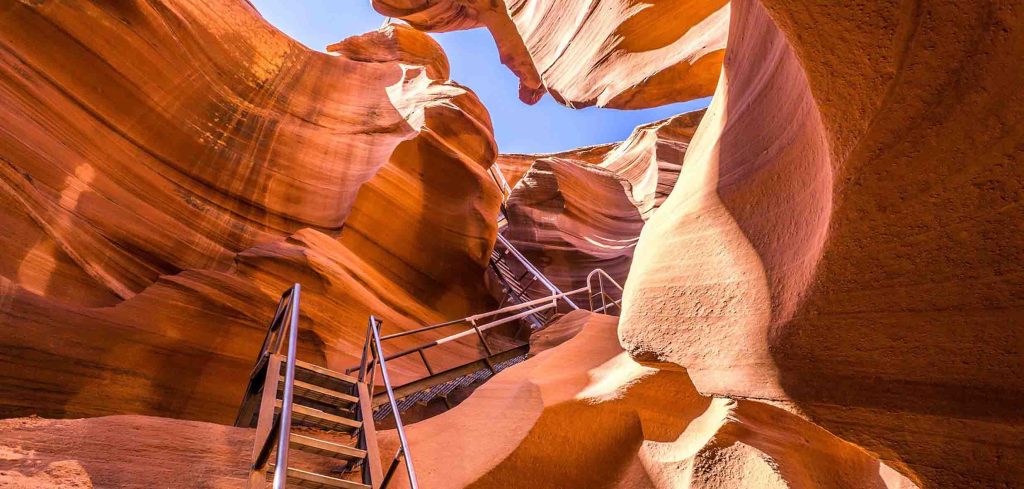
Booking suggestions
Book as early as possible, especially during the peak tourist season, when the number of admissions to Antelope Canyon is limited.
Pay attention to the guide language to ensure unimpeded communication.
Confirm the included services, especially transportation, tickets and photography guidance.
Pay attention to the cancellation and refund policy and adjust the itinerary flexibly.
VI. Photography Guide: Capture the Light and Shadow Miracle of Antelope Canyon
The challenge of sunrise photography in Antelope Canyon is that the light changes quickly and the light in the canyon is dark, so the camera parameters need to be set reasonably. The light column in the Upper Antelope Canyon is obvious, which is suitable for shooting with a large aperture lens and high sensitivity. The photographer should arrive in advance and choose a good angle and position.
Due to protection regulations, tourists are generally not allowed to use tripods. It is recommended to bring a camera or mobile phone with strong anti-shake function. The Lower Antelope Canyon is more suitable for using a wide-angle lens to capture the texture and color of the rock wall due to its complex terrain.
Preparation and precautions before the trip
Clothing: The temperature in the canyon is low. It is recommended to wear light and comfortable sports shoes and layered clothing to facilitate the temperature difference between morning and evening.
Equipment: Bring sunscreen, hats and plenty of drinking water, especially in dry summer environments.
Safety: Follow the guide’s instructions and do not deviate from the route without authorization to prevent slipping or getting lost.
Environmental protection: Respect the natural environment, do not carry or leave any garbage, and protect this precious natural heritage.
The sunrise in Antelope Canyon is a precious gift from nature and time to mankind. The morning light shines through the narrow gaps in the canyon, reflecting a dreamy beam of light, like a flowing golden waterfall, which shocks every traveler.
Reasonable planning of the time and route from Las Vegas is an important prerequisite for experiencing this miracle. Choosing a suitable travel method and combining professional booking channels can help you arrive at Antelope Canyon at the most perfect time and enjoy the unique natural scenery.
Whether you are a photographer chasing light and shadow, or a traveler eager to feel the beauty of heaven and earth, Antelope Canyon will bring you a double feast of vision and soul with its unique magnificence and mystery.
